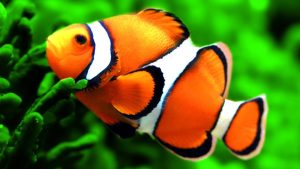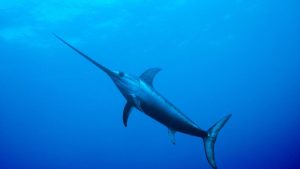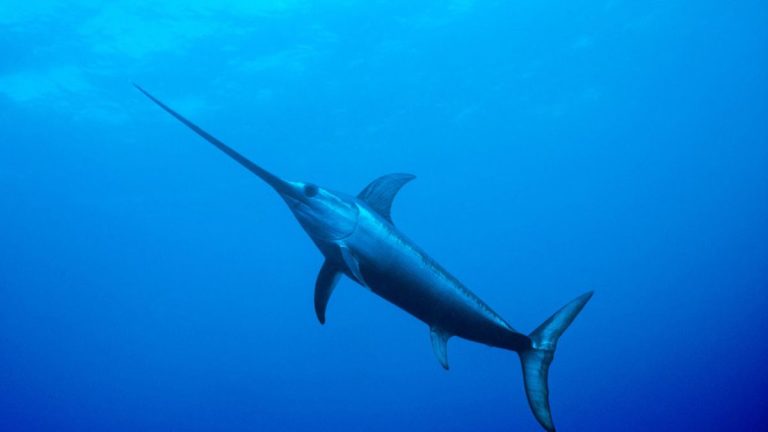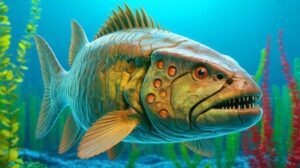The Armored Sea Robin fish, also known as Peristedion miniatum, is a fascinating species that inhabits the deep waters of the Atlantic Ocean. This unique fish is characterized by its armored appearance and vibrant colors, making it a popular subject among marine enthusiasts and researchers alike. In this article, we will explore the physical characteristics, habitat, feeding habits, reproduction, predators, behavioral traits, conservation efforts, unique adaptations, and interactions with other marine species of the Armored Sea Robin.
Physical Characteristics of the Armored Sea Robin
The Armored Sea Robin fish has a distinctive appearance with its bony plates covering its body, giving it a tough and armored look. Its coloration ranges from red to orange, with intricate patterns and markings that help it blend into its surroundings. This fish has elongated pectoral fins that resemble wings, allowing it to "fly" through the water by flapping them rapidly. The Armored Sea Robin also has a large head with a wide mouth and small eyes, which are adapted for hunting small prey in the deep sea.
Habitat and Distribution of the Armored Sea Robin
The Armored Sea Robin fish is typically found in deep waters ranging from 200 to 800 meters below the surface, where it can be seen swimming near the ocean floor. It is commonly found along the continental shelf of the Atlantic Ocean, from the Gulf of Maine to the Gulf of Mexico. These fish prefer sandy or muddy bottoms where they can easily camouflage themselves among the debris and rocks. The Armored Sea Robin is a demersal species, meaning it spends most of its time near the ocean floor.
Feeding Habits of the Armored Sea Robin
The Armored Sea Robin fish is a carnivorous species that feeds on small fish, crustaceans, and mollusks. It uses its specialized pectoral fins to stir up the sediment on the ocean floor, revealing hidden prey that it can quickly snatch up with its mouth. This fish is an opportunistic feeder, meaning it will consume whatever food source is readily available in its habitat. The Armored Sea Robin has sharp teeth that are used to grasp and hold onto its prey before swallowing it whole.
Reproduction and Life Cycle of the Armored Sea Robin
The Armored Sea Robin fish follows a unique reproductive strategy where the female lays eggs that are then fertilized by the male. The fertilized eggs are attached to the male’s pelvic fins, where they are carried until they hatch. Once the eggs hatch, the larvae are released into the water, where they undergo a period of growth and development before reaching adulthood. The life cycle of the Armored Sea Robin is closely tied to the availability of food sources and environmental conditions in its habitat.
Predators and Threats to the Armored Sea Robin
The Armored Sea Robin fish faces threats from a variety of predators in its deep-sea habitat, including larger fish, sharks, and marine mammals. These predators rely on their keen senses and hunting abilities to locate and capture the Armored Sea Robin for food. Additionally, human activities such as bottom trawling and pollution can also pose a threat to the survival of this species. Conservation efforts are necessary to protect the Armored Sea Robin and ensure its long-term survival in the Atlantic Ocean.
Behavioral Traits of the Armored Sea Robin
The Armored Sea Robin fish is a solitary and territorial species that will defend its territory from intruders. It is known to be a slow-moving fish that relies on its camouflage and defensive armor to avoid predators. The Armored Sea Robin is a nocturnal feeder, meaning it is most active during the night when its prey is also active. This fish has a curious and inquisitive nature, often investigating its surroundings and interacting with other marine species in its habitat.
In conclusion, the Armored Sea Robin fish is a fascinating species with unique physical characteristics, habitat preferences, feeding habits, reproductive strategies, predators, behavioral traits, and conservation needs. By understanding more about this species and its interactions with the marine environment, we can work towards protecting and preserving the Armored Sea Robin for future generations to appreciate and study. Conservation efforts are crucial in ensuring the long-term survival of this armored and colorful fish in the deep waters of the Atlantic Ocean.










